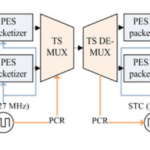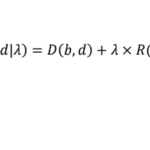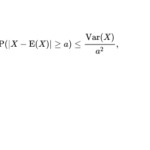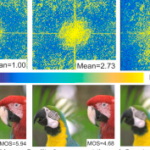The Just Noticeable Distortion (JND) model is a curve which is determined by means of subjective experiments, where random noise is added to a flat image (i.e. all pixels are at a given intensity value ‘v’). The noise is gradually added and for each step in noise intensity level observers are asked whether the noise gets visible or not. When the majority of the observers indicate that the noise is visible, its intensity becomes the JND associated with ‘v’. The curve is obtained by polynomial regression on the empirical points JND(v), here ‘Visibility Threshold’ is JND:

The above figure is taken from the paper: X.K. Yang et al., “Just noticeable distortion model and its applications in video coding”, Signal Processing: Image Communication 20 (2005).
Thus, JND-based quantization is a selection of QP per block such that quantization errors are below or equal to the local JND. The local JND is computed as follows:
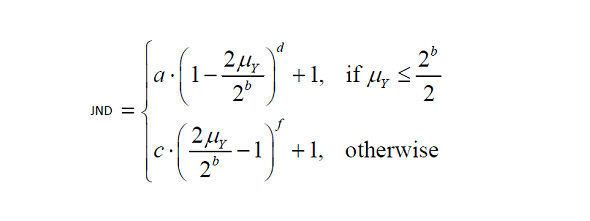
the formula is taken from the article Lee Prangnell, “Visually Lossless Coding in HEVC: A High Bit Depth and 4:4:4 Capable JND-Based Perceptual Quantisation Technique for HEVC“, Elsevier, Signal Processing: Image Communication, Volume 63, April 2018, Pages 125-140
where
- the parameters a, c, d and f are set to values 2, 0.8, 3 and 2, respectively.
- the ‘b’ stands for the bit depth.
- the μY is the average of luma pixels in a given prediction block (8×8 or higher).
JND-based HEVC/H.265 quantization is proposed in the paper Matteo Naccari and Marta Mrak, “Intensity dependent spatial quantization with application in HEVC“, IEEE International Conference on Multimedia and Expo 2013, where QP is chosen according to the local JND model’s threshold such that decoded videos looked visually lossless. The authors of the paper report ~3% of BD-Rate gain when JND-based quantization is used.
Appendix: JND-adaptive motion estimation
If residuals of motion prediction block are less or equal to the local JND then these residuals can be zeroed, (need not be coded).
23+ years’ programming and theoretical experience in the computer science fields such as video compression, media streaming and artificial intelligence (co-author of several papers and patents).
the author is looking for new job, my resume


